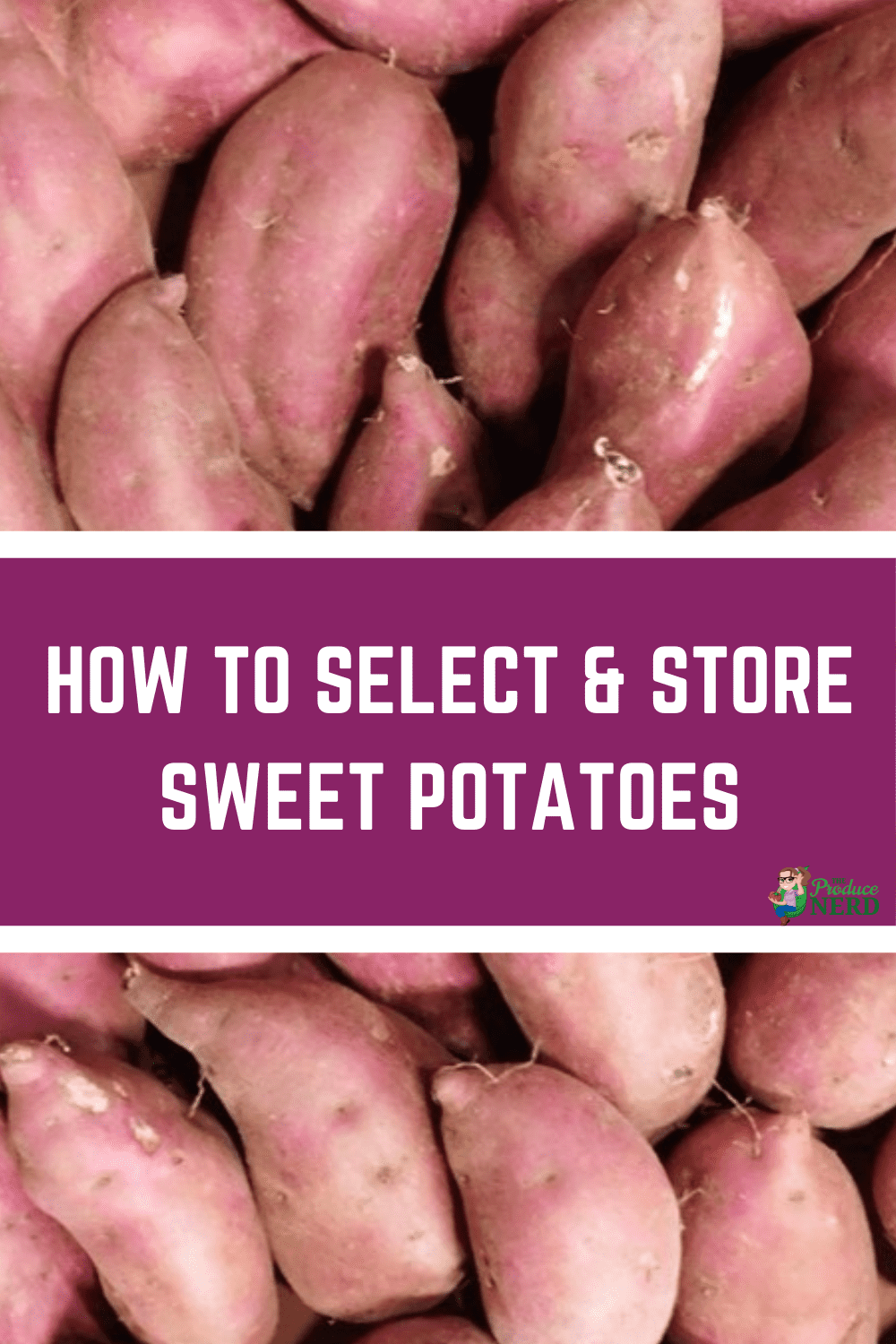Sweet potatoes come in all sorts of colors and flavors, and they are so good for you, so why not enjoy them to the fullest?! This post is all about how to select, store and prepare sweet potatoes in order to be able to do just that!
(This post is an excerpt from The Produce Nerd’s Grocery Guide, with input provided by Jeremy Fookes from A.V. Thomas Produce. You can learn more about the Grocery Guide, which covers this information for 55 different produce items, with input from 26 crop-specific companies HERE.)
What to look for when picking the best quality sweet potatoes?
Sweet potatoes should be firm and dry. Scarring should be minimal, but does not affect product taste or integrity.
Common issues to avoid when selecting sweet potatoes?
Shriveled ends, black spots, soft or mushy product with large holes (wireworm damage). Potatoes that have any of these issues don’t necessarily need to be discarded. Defects can be cut completely off, and the remaining portion of the product should be unaffected and still good.
Are there any common issues that are specifically caused by bad grocery store handling?
Sweet potatoes should be maintained in a dry area at 58°F. They should never be displayed in the refrigerated section of the produce department. Rough handling (especially during the early market—July/August) can cause excessive skinning damage and affect the overall appearance of the product. Scarring/skinned product is still quite good, it just loses the aesthetic appeal of the product.
(Get a look at how sweet potatoes are stored before reaching the grocery store here!)
Are there any new cultivars that are being grown that might have different quality indicators or common issues to look out for?
Stokes Purple Sweet Potatoes—Purple Skin/Purple Flesh—this is one of the “driest” sweet potato varieties produced. It requires a longer cooking time (1.5 – 2 hours) in order for the moisture to be released within the flesh—it takes a while, but it’s worth the wait!
Overview of the Different Types of Sweet Potatoes Grown
What is the best way to store sweet potatoes at home?
- In the pantry or on the counter (NEVER store in the refrigerator—unless it’s been cooked first). It is better to store them in a warmer environment versus a colder one.
Are there any common things that consumers should look for not mentioned above?
- Sprouts on sweet potatoes are not harmful. It’s common for sweet potatoes to begin sprouting if they’ve been in a warm environment for an extended period of time, however, these sprouts are not harmful and can be removed and the potatoes can be consumed safely without worry (unlike Russet-type potatoes, which can create a mild toxicity when they sprout).
What is your favorite way to eat and prepare sweet potatoes?
- Foil wrapped, thrown on the BBQ for 45 minutes – 1 hour and served with a little butter.
If you enjoyed this post, you might also be interested in:
